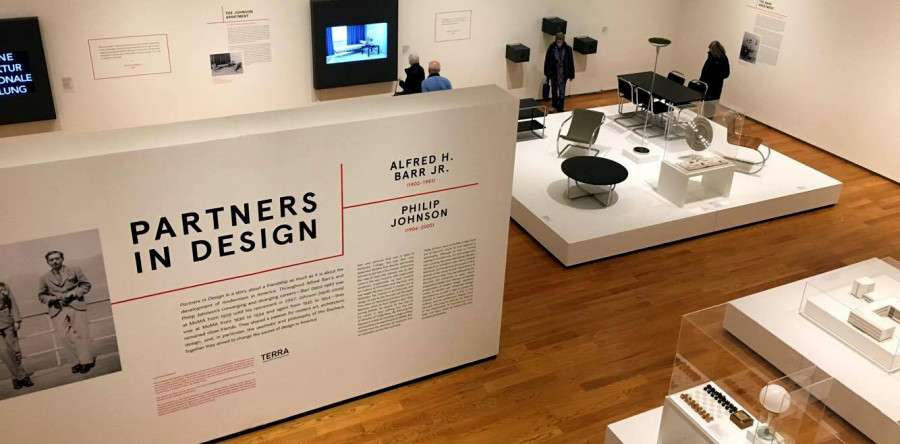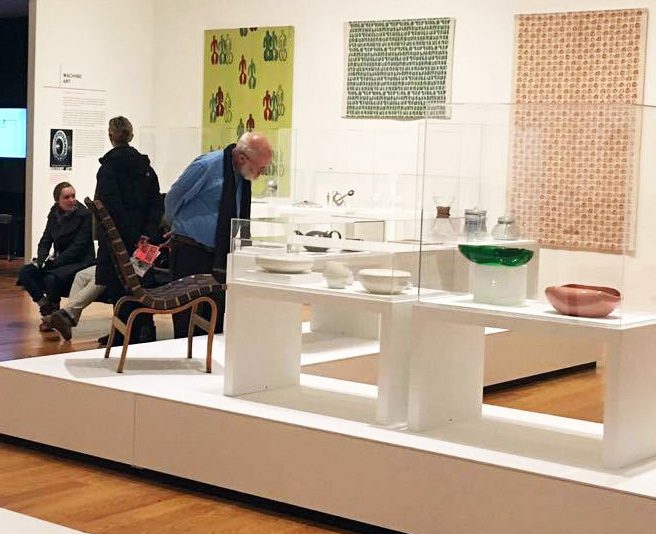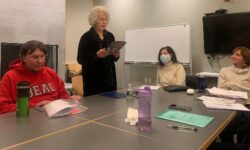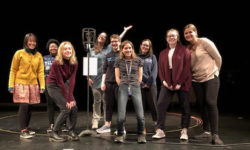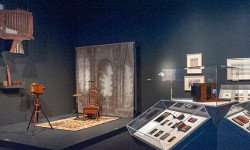[ccfic caption-text format="plaintext"]
By Katrina Margolis
Hometown Weekly Reporter
Every exhibit tells a story, but not every exhibit tells a story quite so grand as that of Partners in Design at the Davis Museum at Wellesley College. This story is not only one of a friendship that blossomed from a meeting at Wellesley, but also the story of Modernism in America, and the two men who changed the national views on modern architecture, design, and the aesthetic and philosophical beliefs of the now infamous Bauhaus.
Alfred Barr and Philip Johnson met at Johnson’s sister’s graduation from Wellesley in 1929 - one of the many women in Johnson’s life who attended Wellesley. From that meeting, their friendship bloomed and they remained close friends for the rest of their lives. Barr was soon appointed the first director of the Museum of Modern Art in New York. He invited Johnson to join him on his mission. At the time, Barr was merely 27, and Johnson was an unbelievable 23.
Before Barr’s influence extended to the national via the MoMA, he taught the first ever modern art course in North America at Wellesley College. Now famous to those at the school, Art 305: Tradition and Revolt in Modern Painting was described in the course catalogue as follows: “Pictorial organization; expression; representation. Twentieth-century painting; its relation to the past; especially the 19th century; to developments in the other arts; to criticism and fashionable aesthetics; to contemporary civilization.”
Eleven Wellesley women were the first to bear witness to the passion Barr held for not only modern art but the aesthetic promoted by the Bauhaus. Founded in 1919, Barr and Johnson visited between 1927 and 1931 before the school was shut down by the Nazis. Despite its closure, the school’s influence spread like rapid fire as Barr began to showcase more and more of the Bauhaus aesthetic, which promoted functionality over decorative design. Some of these early exhibits included Useful Objects, which required all pieces to meet qualifications regarding suitability of purpose, material, and manufacture, as well as aesthetic quality; Machine Art, which showcased over 400 objects that featured the machine aesthetic and industrial design principles advocated by the Bauhaus; and Modern Architecture.
It was not only in the public sphere that Barr and Johnson promoted these ideals. Their personal homes were “laboratories for experimenting with new design ideas.” Barr and his wife lived in three apartments in New York, all of which housed new display techniques, themes he was exploring, as well as the practice of transforming a standard apartment into an exemplar of modernism. Johnson helped advise Barr on the design of his apartments, and even provided a chair and lamp of his own design for them to use.
Nearly impossible to imagine a world without the Bauhaus aesthetic, the birth of the American Modernist movement began not even so far away as New York, but in a classroom at Wellesley College.




